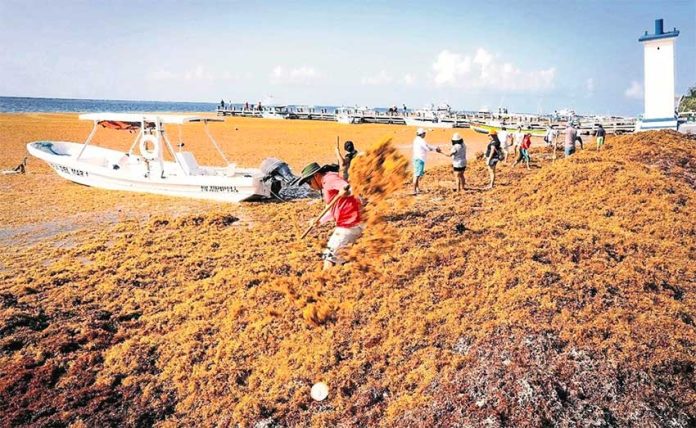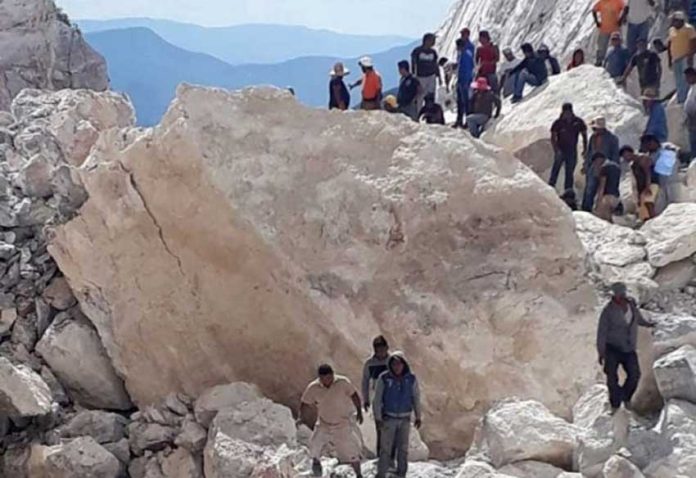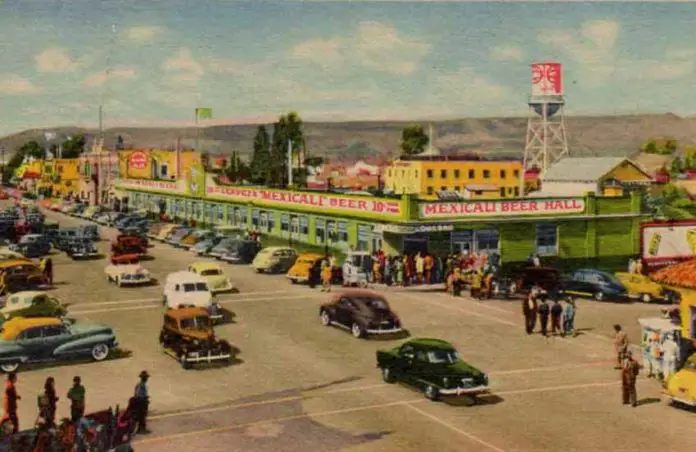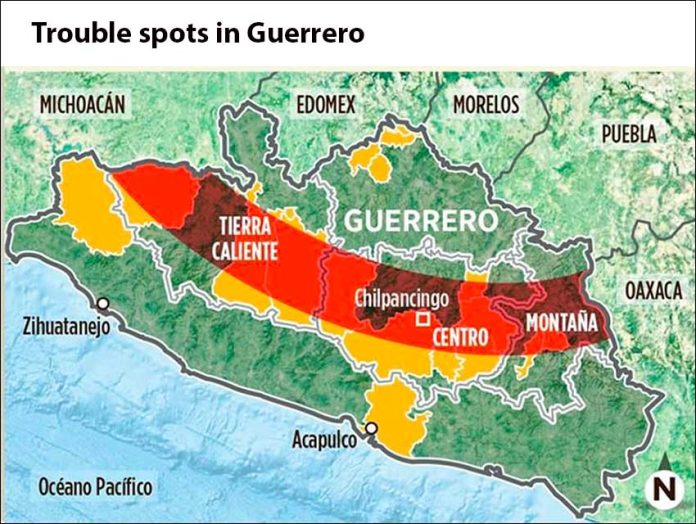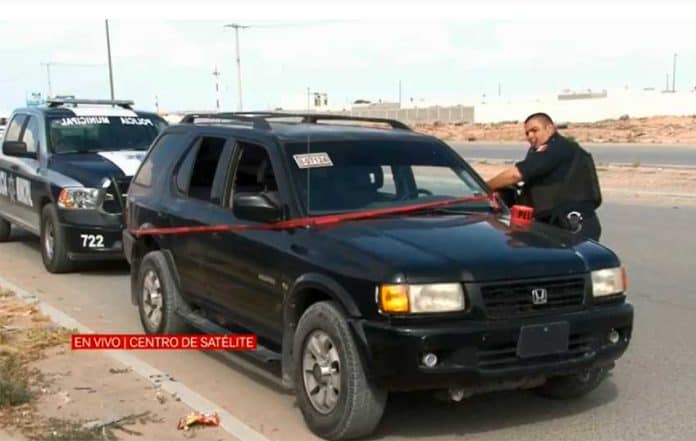I grew up on a 20-acre avocado orchard east of San Diego, where my dad hired transient Mexican workers during the picking and pruning season.
They camped out in the orchard for a couple of months each year, which seemed normal and natural in my idyllic youth. After all, I loved to go camping and what could be better than camping out in the summer time? Usually the same two would come back each year, with a couple of younger men, and work the fields from San Diego County up to Temecula, Hemet, Riverside and beyond.
They would always have a small fire going in the evenings, and would welcome me when I showed up with a woven picnic basket containing simple but adequate fare, plus some instant coffee and sweet rolls for the following morning. I would sit around the fire for a while and listen to their talk while trying to recognize any of their words which dwelled in my small vocabulary.
The older man, who had come for several years running and whose English was rough but understandable, would describe his life at his family’s ranchito in the mountains east of San Quintín, in northern Baja. I was fascinated by his stories of a wild country, with cougars, bobcats and packs of wild peccaries, which could gobble up a man in moments. So I think I was around 12 years old when I first got bitten by the Mexico bug.
By the time I was 19 years old, I had been to Ensenada on numerous occasions while enjoying my share of adult beverages in a country seemingly devoid of laws against underage drinking. However, I had not as of yet explored the seamy side of Mexico so readily accessible in the streets of Tijuana; it had always been a town to just pass through.
It was a warm evening in August when a friend and I decided to go bar hopping in Tijuana. We had heard stories about drunken sailors doing obscene things with naked women at one of the many sex shows on the side streets off Avenida Revolution. The Blue Fox, The Blue Note, the Chicago Club were all names bandied about by our older and more seasoned friends.
We crossed the border at San Ysidro about 9:00pm in Dave’s ’55 Chevy, and headed into the seedy heart of a town so nefarious that its despicable reputation was global in scope. However, the blush of youth, coupled with a significant surge of hormones, eclipsed whatever little judgment we may have possessed on that fateful night.
As we slowly rolled up to the two-lane border crossing, the percipient smile of the federale as he waved us through should have been our first clue; but we were kids — we thought he was just extra friendly.
We found parking on Avenida Revolución a couple of doors down from the Long Bar. When we parked, Dave toggled off the secret kill switch under the dash as an anti-theft precaution, and we headed into the infamous bar. Shots of tequila were 25 cents and bottles of Superior went for 10.
There was also some beer on draft for five cents, but it tasted as though it had been recycled from the men’s room. After some time, with a bit of liquid courage under our belts, we headed off into the mean streets of TJ.
Since we looked like kids who had recently escaped from an episode of Leave it to Beaver, the hawkers zeroed in on us like the highly tuned predators they were. There were nightclubs with some type of show on every block, so we picked one and stepped inside.
The place was packed and the music was deafening. So deafening that we tried another. That place was also packed so we went down a side street and entered a bar which was at that moment between shows and only half full.
We found a booth with a good view of the stage and ordered a couple of beers. Almost immediately, two scantily clad women slid into our booth and asked us to buy them drinks. Being welcoming and obliging young lads, of course we did. Then the woman who was next to Dave slipped her hand under the table and the shocked look on his face told me right where her wandering hand had landed.
Then, moments later, both women got up from the table and wandered off. It was then Dave discovered that the woman had worked his small wad of cash out of his front pocket. What a surprise; he thought her interest was in something else down there.
He suddenly went ballistic, bolting out of the booth and demanding his money back from the bartender. The bartender’s shoulder shrug was the classic Mexican gesture of indifference. As Dave stormed around the bar looking for the thief, the bartender either made a phone call or pushed a button; I am not sure which.
But within two minutes, three Tijuana policemen entered the bar and came directly up to Dave. Dave, of course, was glad to see that the law had arrived and thought they would help him recover his cash; he was wrong. He suddenly became a drunken gringo who had been abusing the women and would require incarceration.
I followed them out the door and stood on the sidewalk watching Dave being escorted by a cop on either side while he was pleading, “Do something! Don’t let them take me away!” As he got to the back of the battered black and white, he twisted and executed a quick underhanded toss of his car keys towards me.
As I stood somewhat frozen on the sidewalk, with the keys in my hand, the third cop looked at me and motioned me to hand them over. He took a couple of steps in my direction. I spun around and bolted down the sidewalk with the full confidence that none of the three cops were in any type of physical condition to give a meaningful chase. I knew that handing the keys over would have guaranteed the instant loss of a very nice car.
After several blocks of zigging and zagging around the back streets I came out on Avenida Revolución two blocks east of the ‘55. I attempted a casual jog down the sidewalk, dodged a few drunks and then cut across the street to the Chevy. I looked around, got in, flipped the switch and fired it up.
I had visions of Dave being tortured to divulge the location of his car, and I thought he would have probably talked by now. But I knew I could become invisible quickly. After all, Tijuana wrote the book on making vehicles vanish like stardust into a black hole.
I drove to the parking lot of the Fronton Palacio (Tijuana’s Jai-Lai Palace) and backed into a slot at the rear of the lot. I had gone to school with the son of the owner of the Jai-Lai Palace, so it was my first thought. I was sure the family knew the right people to quickly extricate my friend from the insidious innards of the Tijuana jail. However, 1:15 in the morning was not the best time to call anyone and expect to receive the good will you hope for when seeking assistance.
I walked over to a guard at the side entrance to the Jai-Lai Palace and asked for directions to the Tijuana jail. After receiving them, I went back to the car and pondered my rather slim choice of options.
I decided to carefully case the neighborhood around the jail while looking for a bail bondsman, or just someone to bribe. After about 40 minutes of driving around the general area of the jail, I realized nothing was open at this hour other than the jail and an all-night liquor store.
So I picked up a few snacks, added some ice and drinks to the cooler, and then parked on a corner with a view of the jail out the passenger side windshield.
Around 2:30, as I was hunkered down, with The Wolf Man fading in and out on the radio, I saw a commotion across the street. Four policemen were struggling with a large and uncooperative man, who was apparently in an altered state of mind. There was much shoving, pushing and grabbing, along with a string of vehement Spanish expletives from all participants in the melee, many of which dwelled in my growing Spanish vocabulary.
The shouting began to fade out as the tussle moved deeper into the interior of the large, shabby building. My eyes were still on the entry, as I was contemplating all of my “first time” experiences that had stacked up on this bizarre night, when I saw Dave blow through the door, glance around and zero in on his car a half a block away. Dave was a little overweight and did not possess an athletic body, nonetheless he was pounding the ground like Jesse Owens.
Quickly recovering from my open-mouthed astonishment, I fired up the Chevy and pulled forward into the center of the intersection, deeply comforted by the rumbling sound of the 327 under the hood. Dave was about 20 feet from the car when I saw the first few cops come boiling out of the building.
Once again, displaying an athletic grace only achievable with adrenalin-soaked terror, Dave dove through the passenger’s side window, screaming “HAUL ASS, I’VE ESCAPED.”
I pushed the tach to about 5,000 rpm, dumped the clutch, took it to about 7,500 and pounded second gear with my foot mashed to the floor. I quickly slammed third in the same manner. Before I went to fourth gear, I glanced in the rearview mirror and could see, in the distance, the silhouettes of a handful of cops in the intersection, with a slight haze of tire smoke drifting in the streetlights.
I then hit the brakes and slowed to navigate a series of turns which I hoped would take me to the old Tijuana/Tecate road. I had no intention of driving back through TJ only to encounter the same smiling federale with his newfound cop friends, all lying in wait at the San Ysidro crossing.
Dave guzzled a couple of back-to-back beers from the cooler before he was able to talk. He told me that a group of six to eight cops were all wrestling with a big drunken guy while trying to get him in the cell. During the momentary confusion, and with the cell door left open, Dave quietly slipped out and casually walked through the facility and sprinted out the door.
When he saw the Chevy sitting at the cross street and began to hear shouts and running footsteps, he knew the next 10 seconds were to be the most important in his young life.
Besides a few scrapes from diving through the window, and the strange background aroma wafting from his clothes, he seemed none the worse for wear. Our next obstacle was the border crossing at Tecate coming up in about 40 minutes.
Since the Tecate crossing only consisted of two booths, both on their respective side of the line and within 200 feet of each other, we quickly cruised into the USA side with our hearts pounding but hopefully safe. The border patrol officer leaned his head in the car and asked our citizenship. We both responded without flubbing any words, fearfully anticipating the content of the coming questions.
Next, he purposely looked both of us in the eye and held our gaze for what seemed to be an eternity. And then said, “You boys are out kinda late, are you OK to drive home?”
We both assured him with mutual head bobbing while spewing affirmatives. He gave the window sill a pat with his right hand and said, “OK, get out of here.”
The writer describes himself as a very middle-aged man who lives full-time in Mazatlán with a captured tourist woman and the ghost of a half wild dog. He can be reached at [email protected].
